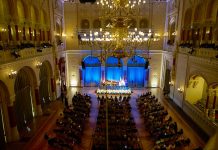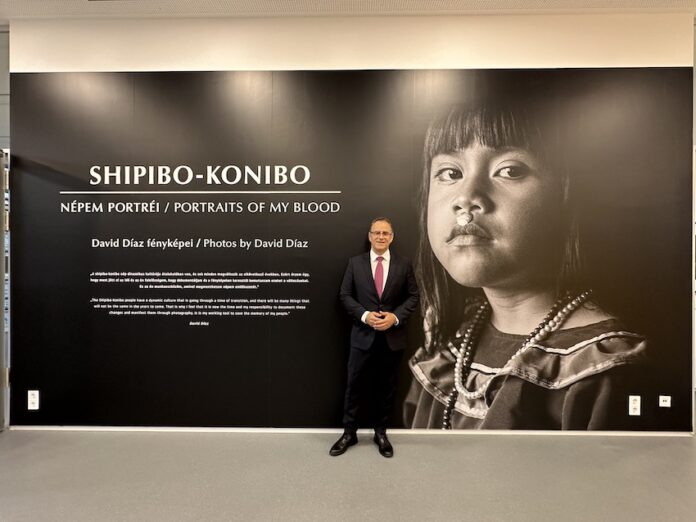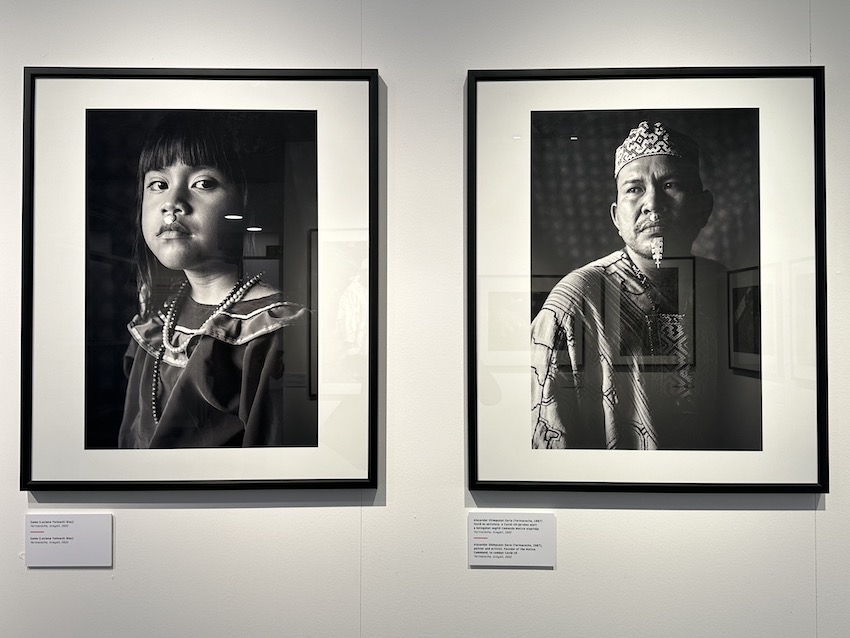Exploring Identity – Capturing Heritage Through the Lens of a Talented Artist
Edited by Anna Popper
The Embassy of Peru in Hungary, in cooperation with the Museum of Ethnography in Budapest, organised a photo exhibition entitled: “Shipibo-Konibo. Portraits of my Blood” by the prominent and very talented young Peruvian photographer David Díaz.

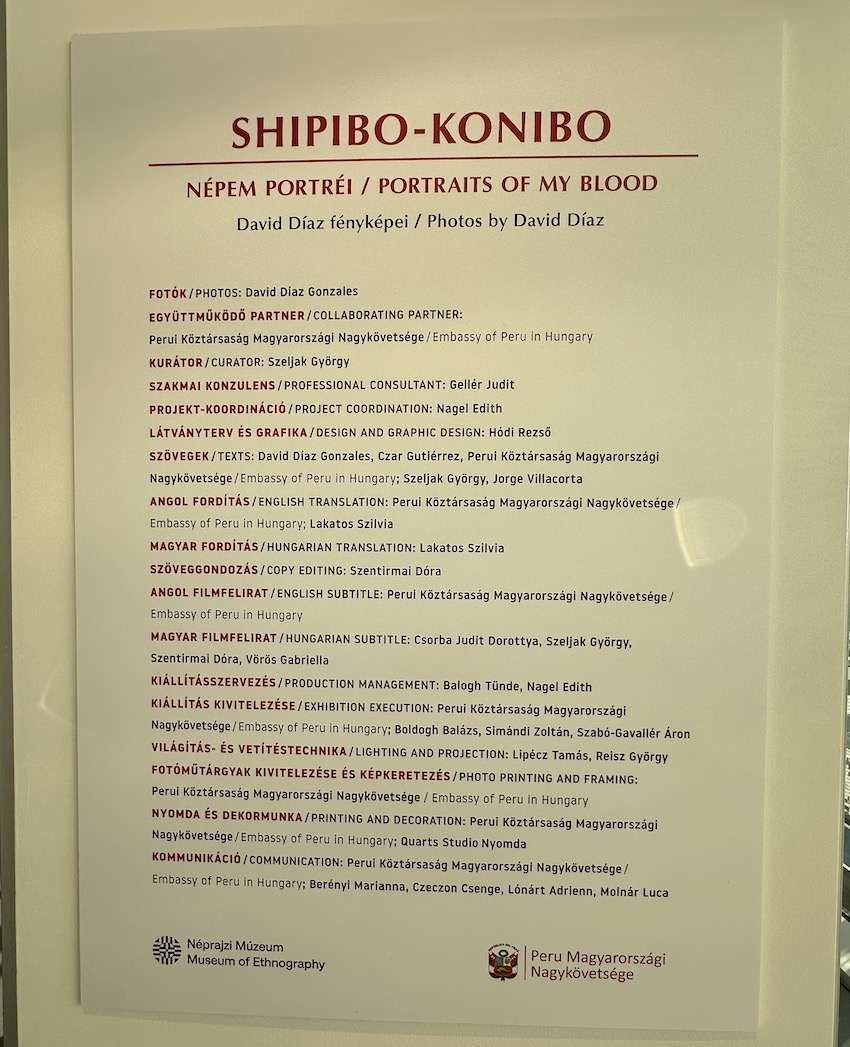
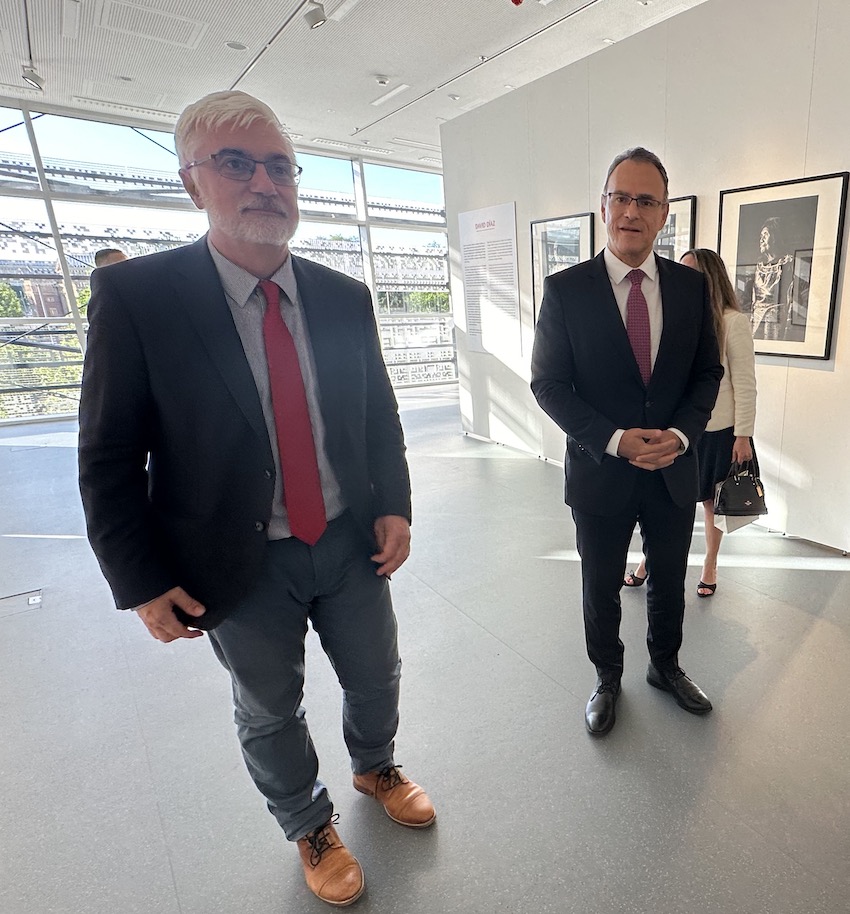
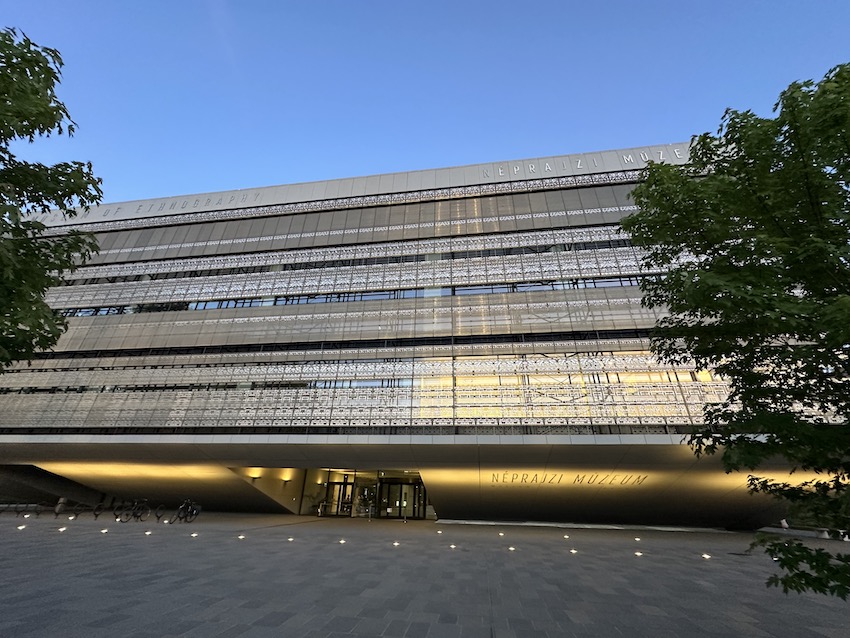
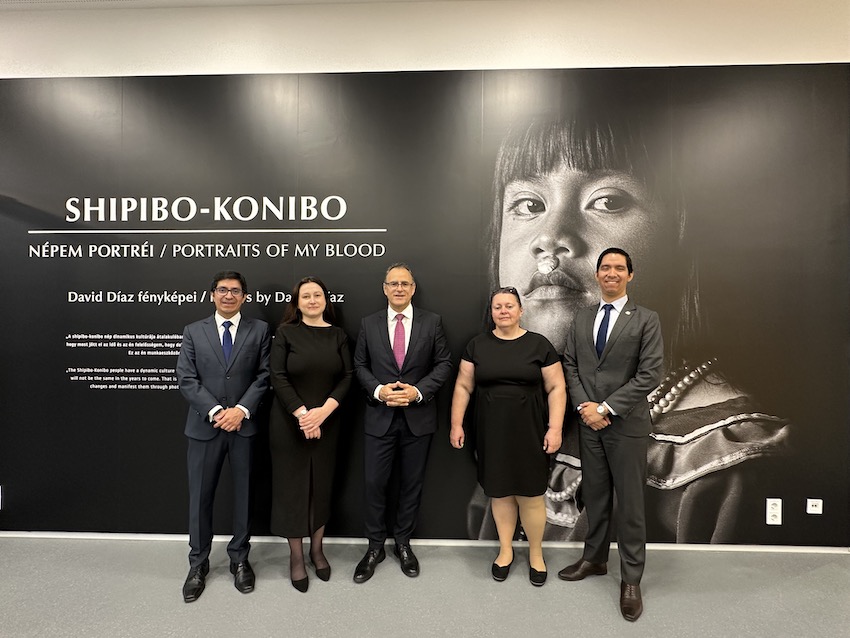
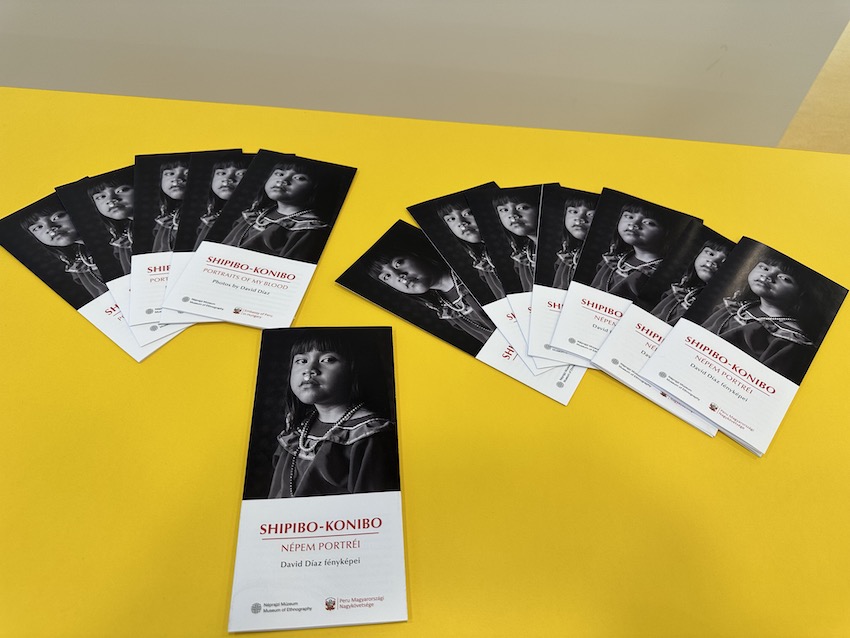
The inaugural event, held on 9 May 2024, attracted esteemed participants from the diplomatic corps accredited to Hungary, government officials, members of the media, and representatives of entities dedicated to artistic promotion in Hungary. Their keen interest in this cultural exhibition was palpably expressed throughout the gathering.

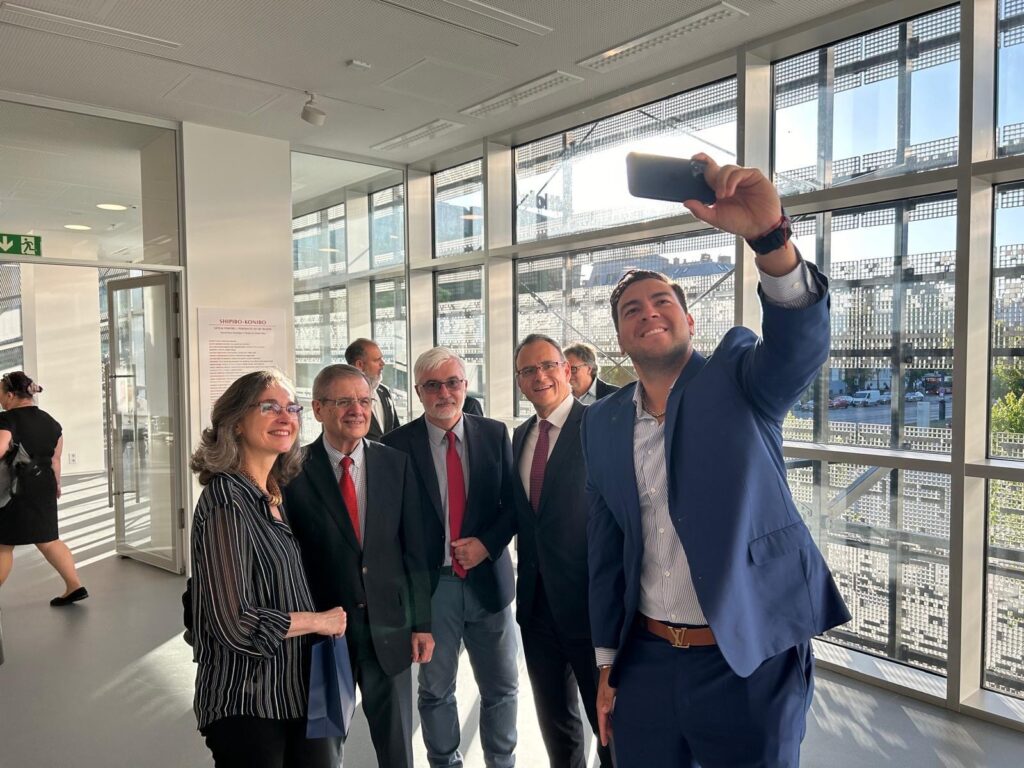
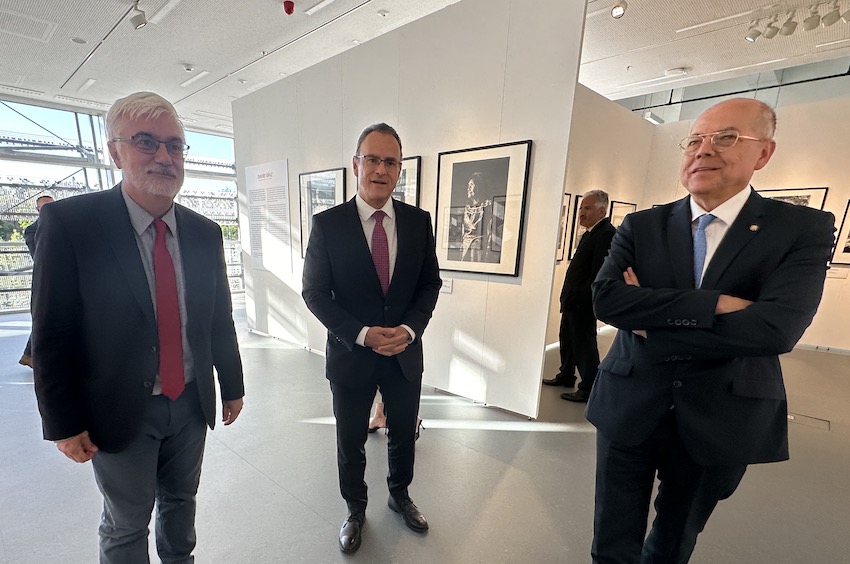
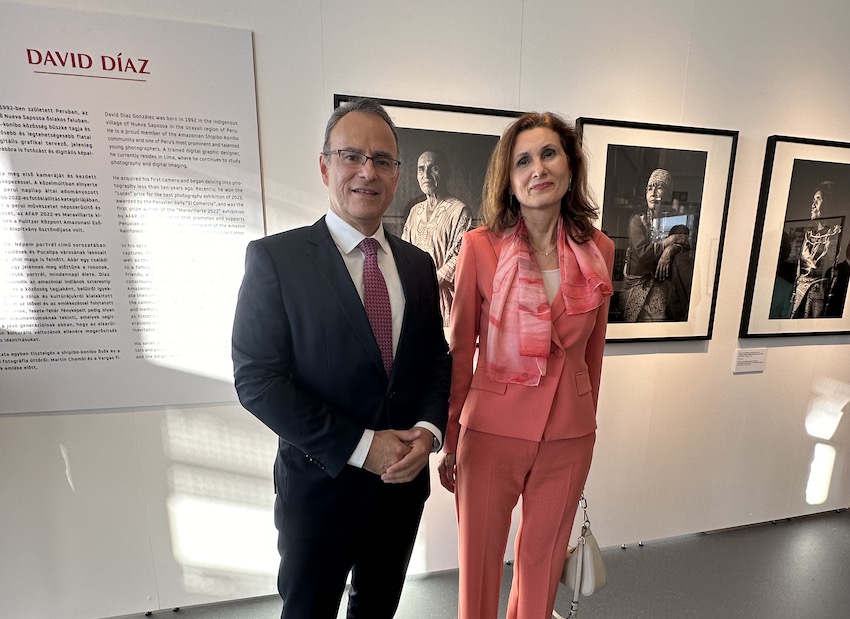
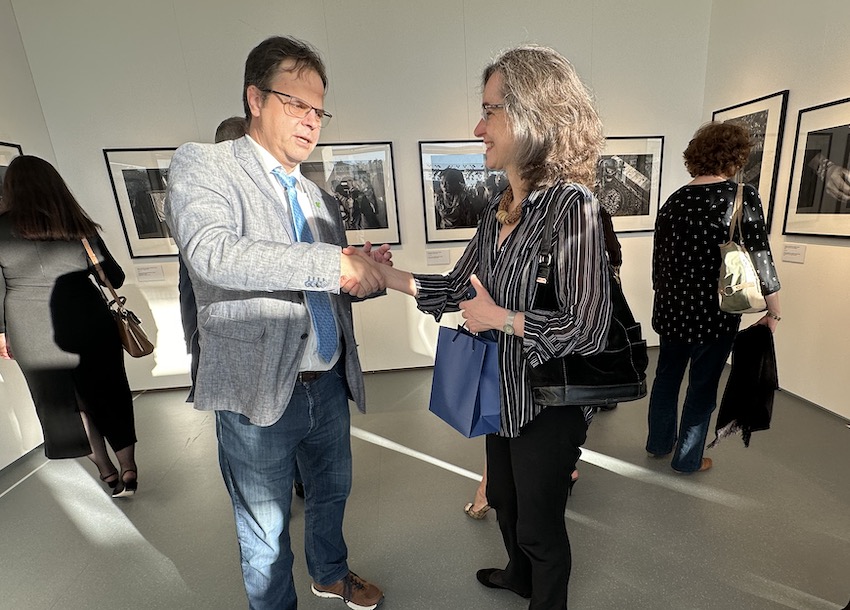
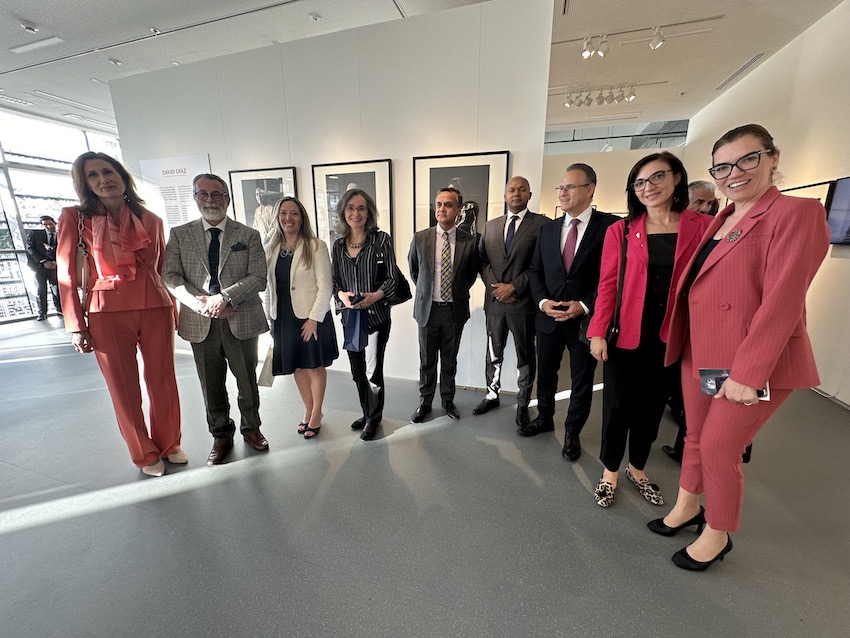
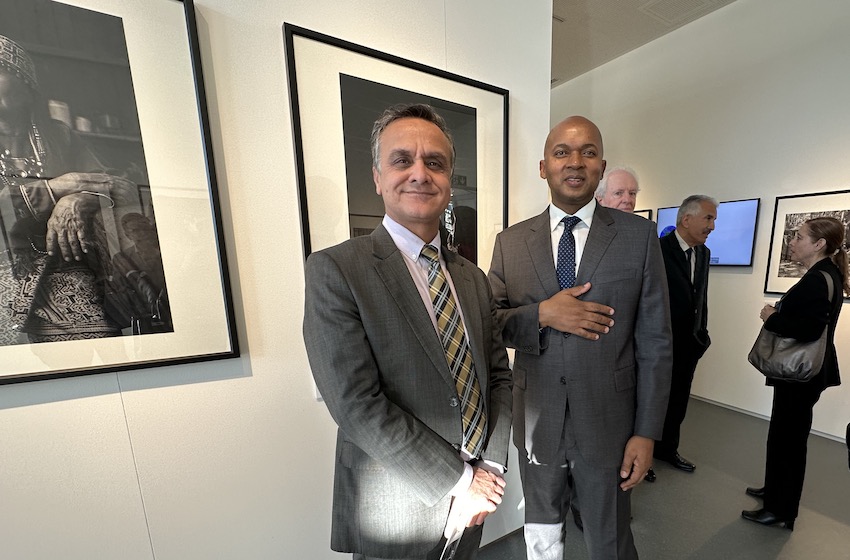
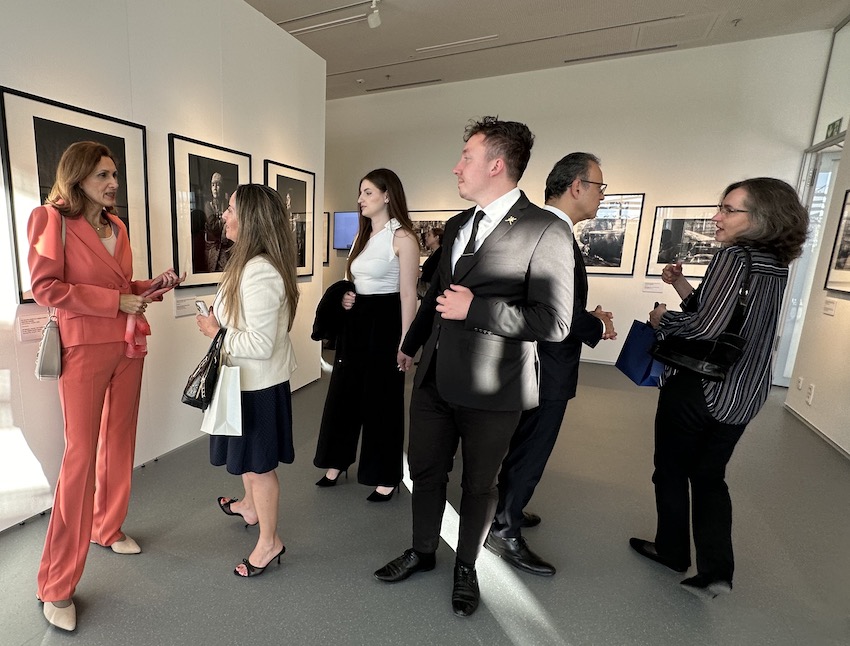
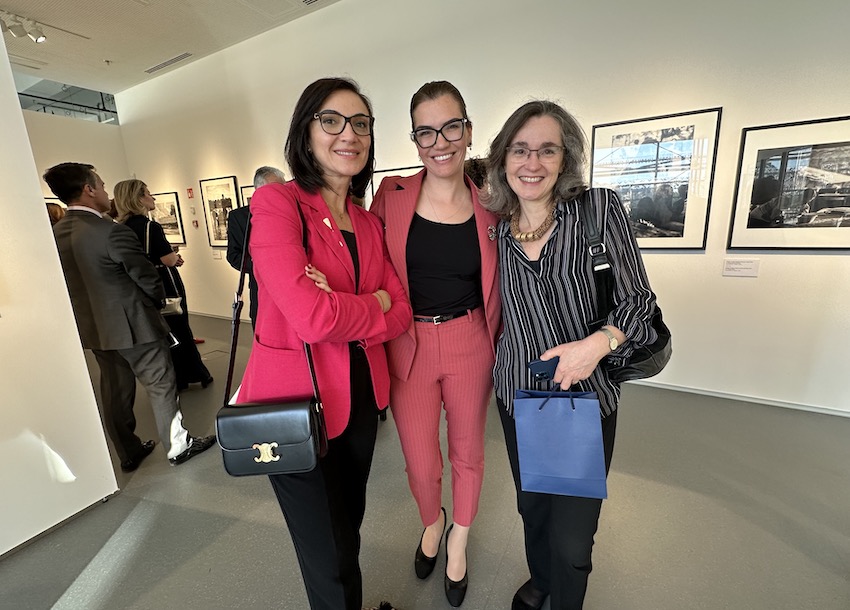
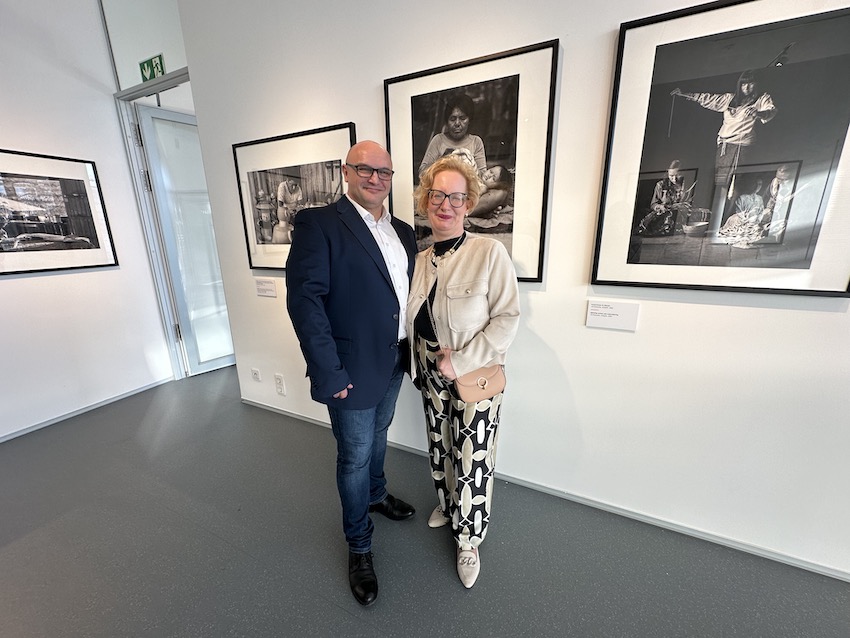
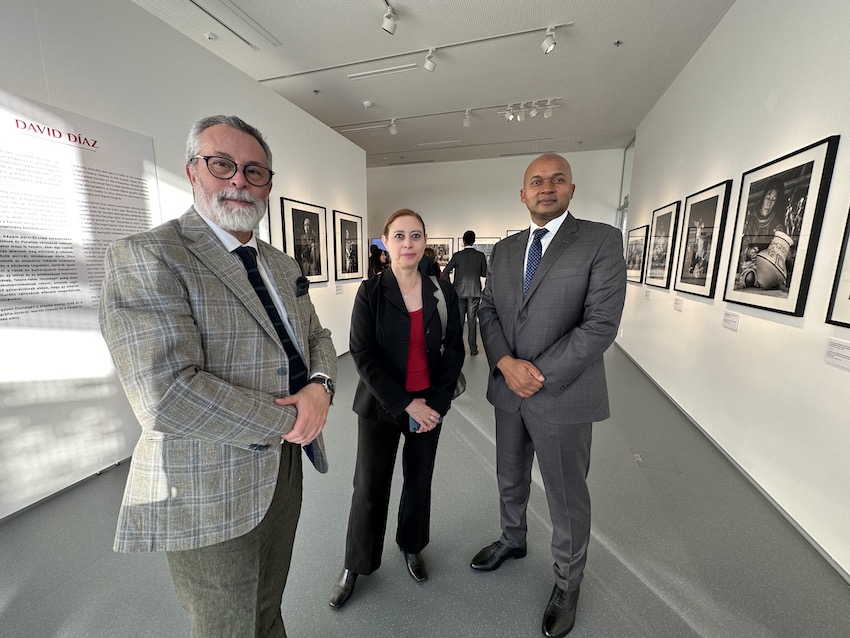
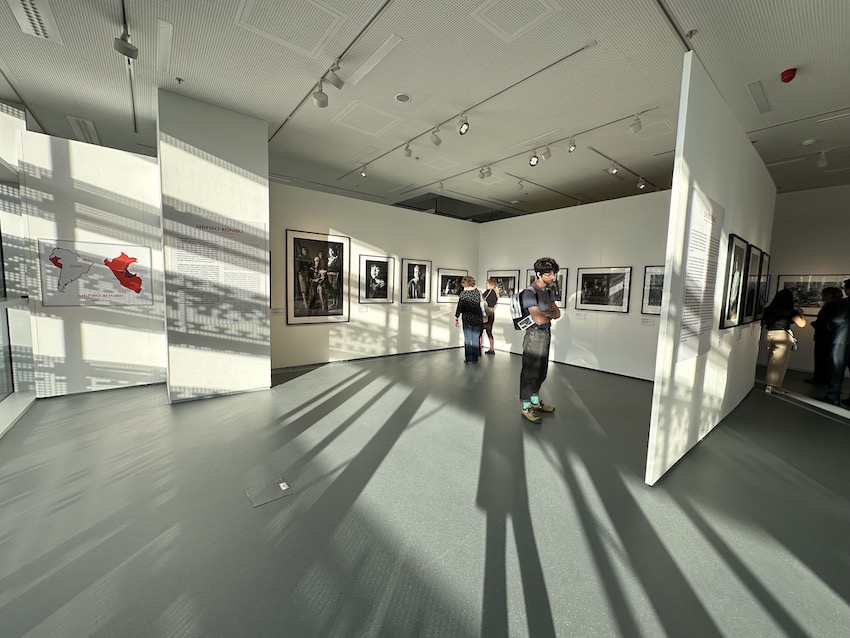
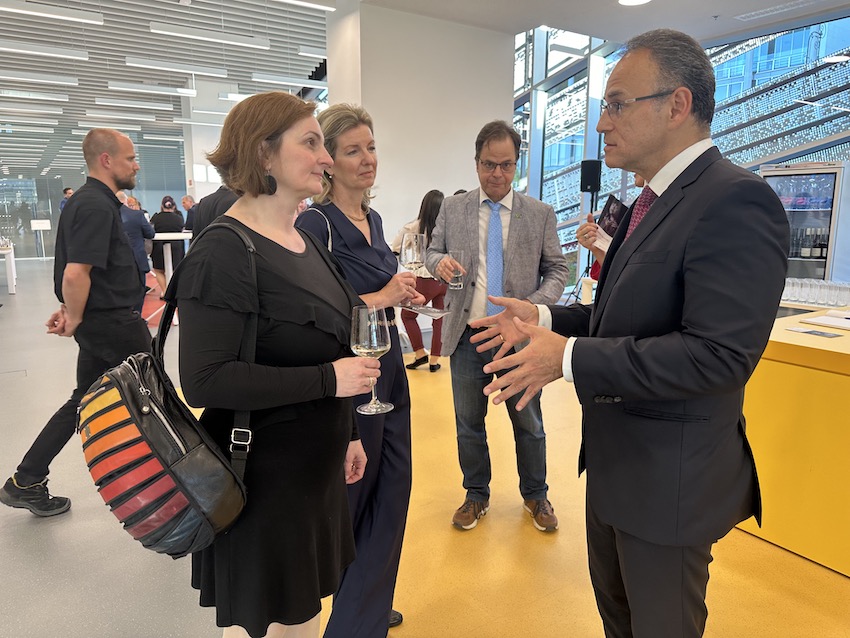
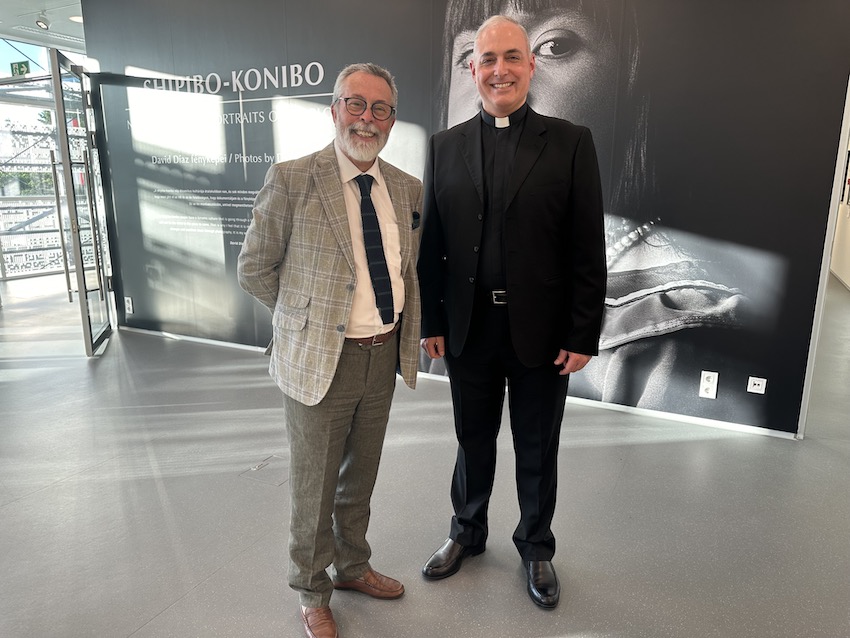
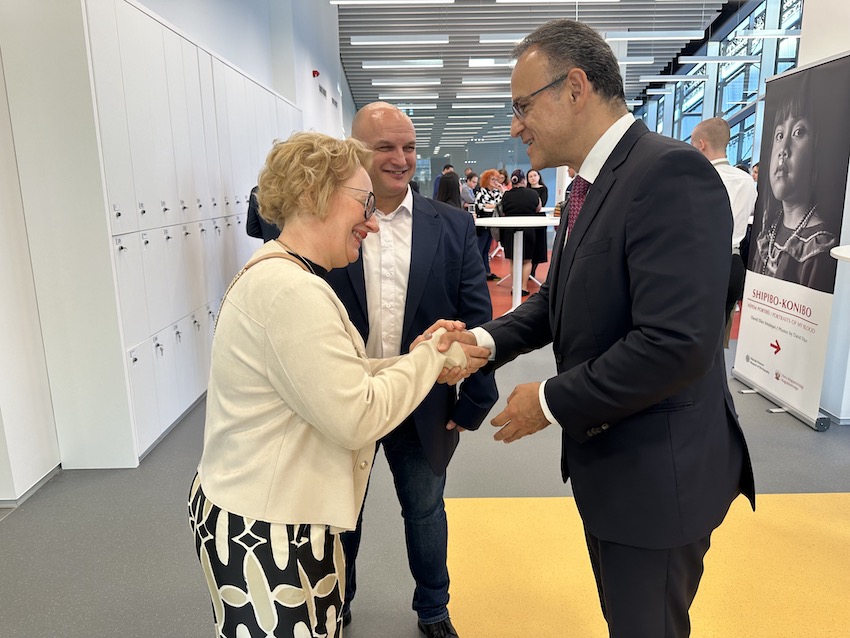
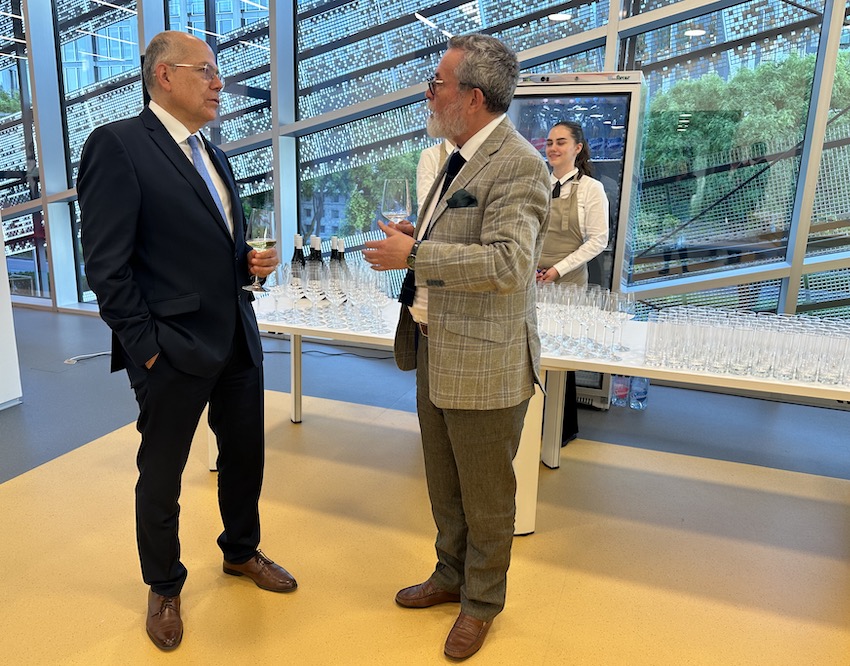
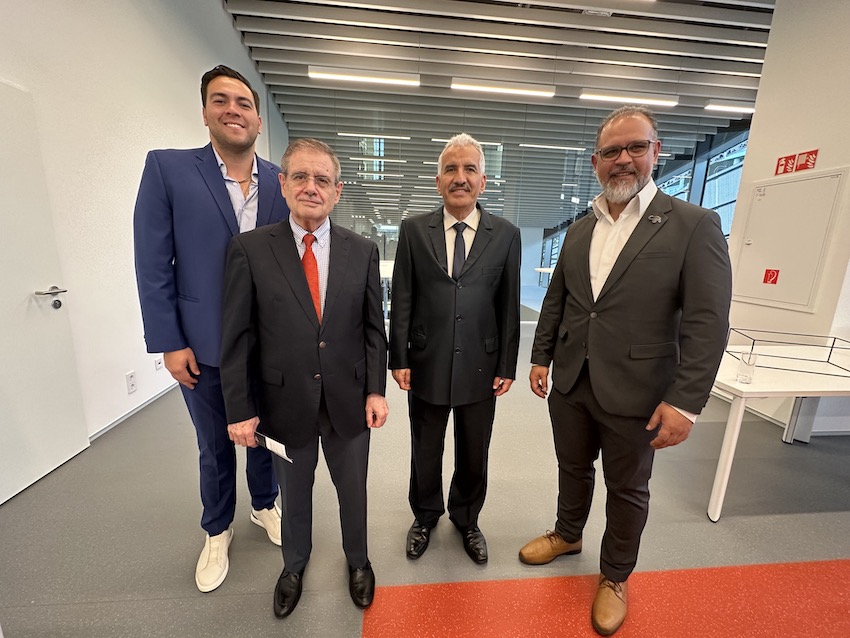
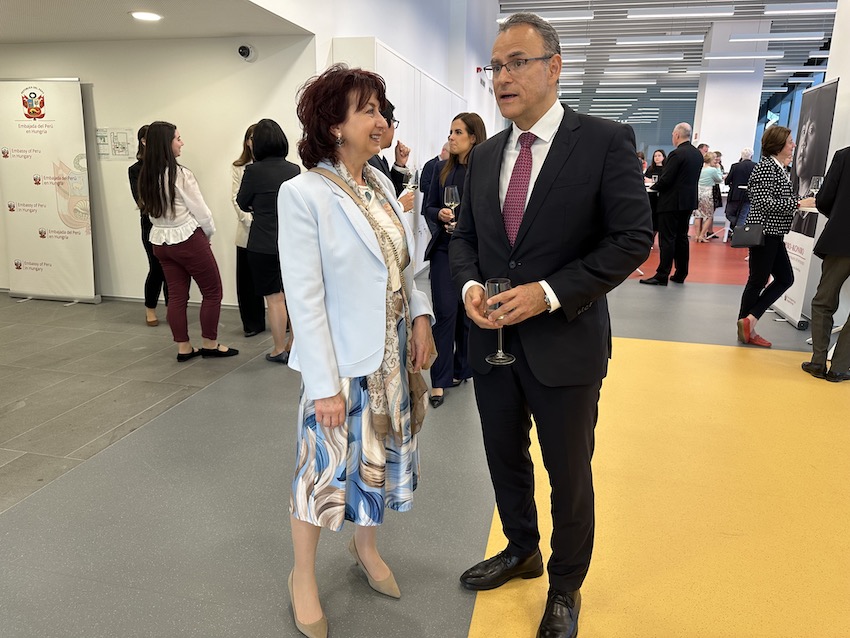
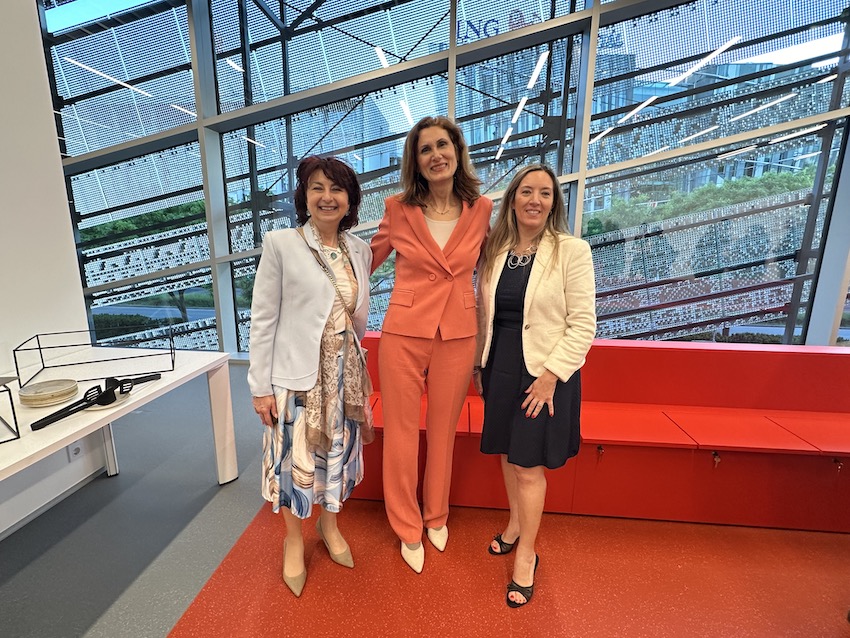
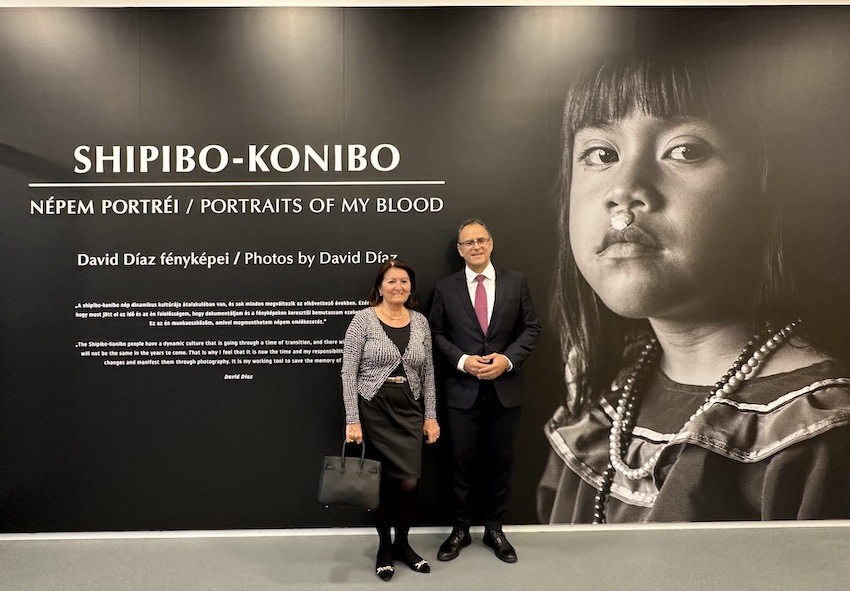



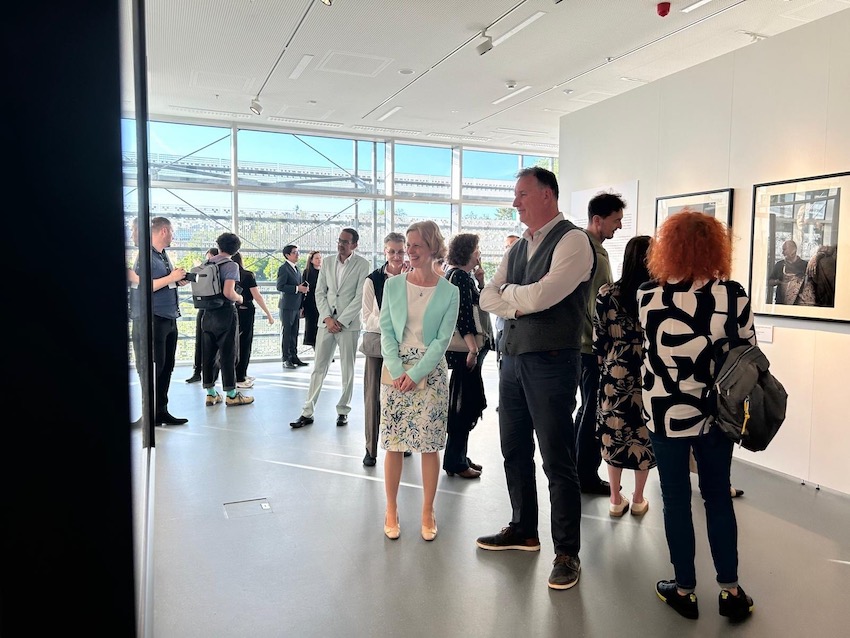
In his opening remarks, His Excellency Edgard Pérez Alván, Ambassador of Peru to Hungary invited guests to discover and celebrate the Shipibo-Konibo indigenous community, native of the Amazon region of Peru:

“Ladies and Gentlemen, Esteemed Guests, thank you for your presence in the exhibition ‘Shipibo-Konibo. Portraits of my Blood’ by David Díaz. Your interest and support in exploring the richness of Peruvian culture through our arts make events like this possible and meaningful.
I would also like to express my appreciation to the Museum of Ethnography for partnering with the Embassy of Peru in bringing to life this photo exhibition. The collaboration of the Museum, especially its Director General, Dr. Lajos Kemecsi, has been instrumental in ensuring that this endeavour turns into a reality.
Today we invite you to discover and celebrate the Shipibo-Konibo people, an indigenous community of 30,000 inhabitants from the Amazon region of Peru. In the Shipibo-Konibo community, women have a dominant voice in community decisions and are also the main artists. Shipibo-Konibo women use the visions they experienced under the influence of the traditional psychoactive beverage ‘ayahuasca’ as part of the visualization process and mental creation of their designs.

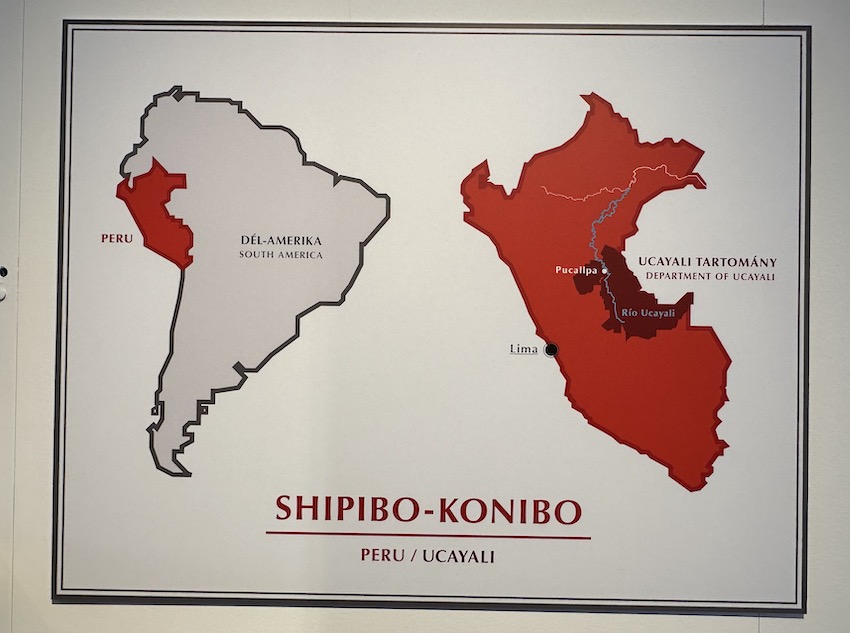
The Shipibo-Konibo are renowned for their intricate art, particularly their distinctive designs known as ‘Kené’, which are composed of geometric patterns that express the Shipibo worldview and spirituality. Their culture is a vibrant element in the fabric of Peru’s diverse heritage, an impulse that continues to thrive in the modern age. Today, Shipibo-Konibo’s art is a source of inspiration for painters in the region and for the Pucallpa City Art School.
This exhibition, Shipibo-Konibo. Portraits of my Blood, by talented photographer David Díaz – who is also a member of the Shipibo-Konibo community – offers a unique window into the souls and stories of his people. Through his lens, we get an intimate glimpse of a community rich in tradition, resilience and beauty. Each photograph tells a story, it is not just a portrait but also a collective identity navigating the challenges and changes of the 21st century.
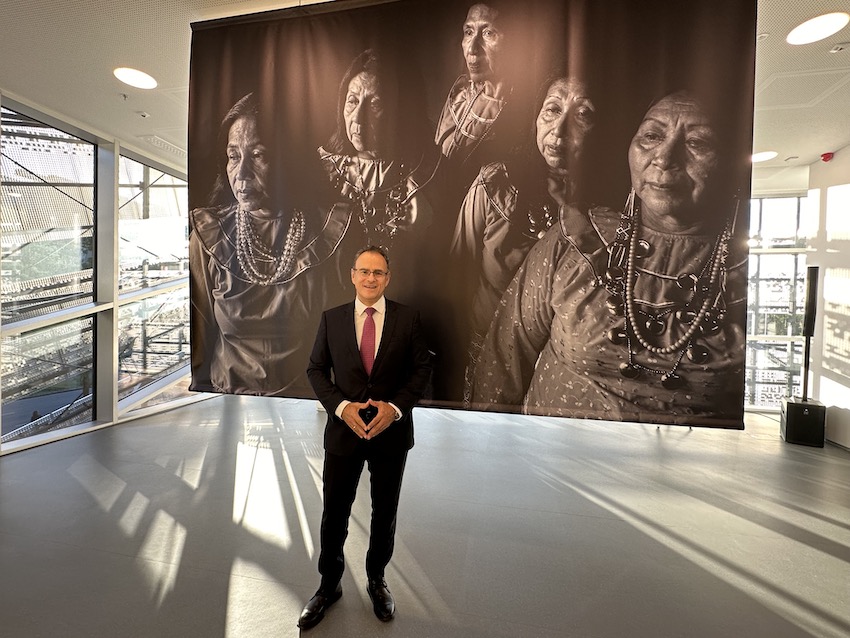
David’s purpose goes beyond mere documentation; his work is a passionate endeavour to preserve and celebrate the identity of the Shipibo-Konibo people. It is an invitation to witness the dignity and richness of this remarkable community and to acknowledge its enduring legacy and ongoing contribution to Peru’s cultural mosaic.
The Amazon region of Peru, home to the Shipibo-Konibo community, is one of the most biodiverse areas on our planet. It is not only a critical component of the global ecological system, but also a hub of cultural diversity that includes 51 of Peru’s 55 indigenous groups. In addition, 44 of Peru’s 48 indigenous languages are spoken in the Amazon. Protecting this region means safeguarding the heritage and livelihoods of its inhabitants, like the Shipibo-Konibo, which are vividly showcased in David’s photographs.
Before we enjoy the captivating works on display, I wish to reiterate my heartfelt thanks to the museum’s Director General, Dr. Lajos Kemecsi, and his entire team, whose diligent efforts made today’s event a reality and to all of you who are present with us.
I encourage all of you to stay connected with the Embassy of Peru through our social media platforms, where you will find our next events, insights and celebrations of Peruvian culture.
By this I declare the exhibition open, please enjoy the photographs.”


The Embassy of Peru in Hungary extends an invitation to the Hungarian and international communities to visit this new temporary exhibition at the Museum of Ethnography and witness the dignity and richness of this remarkable community, as well as recognize its enduring legacy and ongoing contributions to the cultural mosaic of Peru.


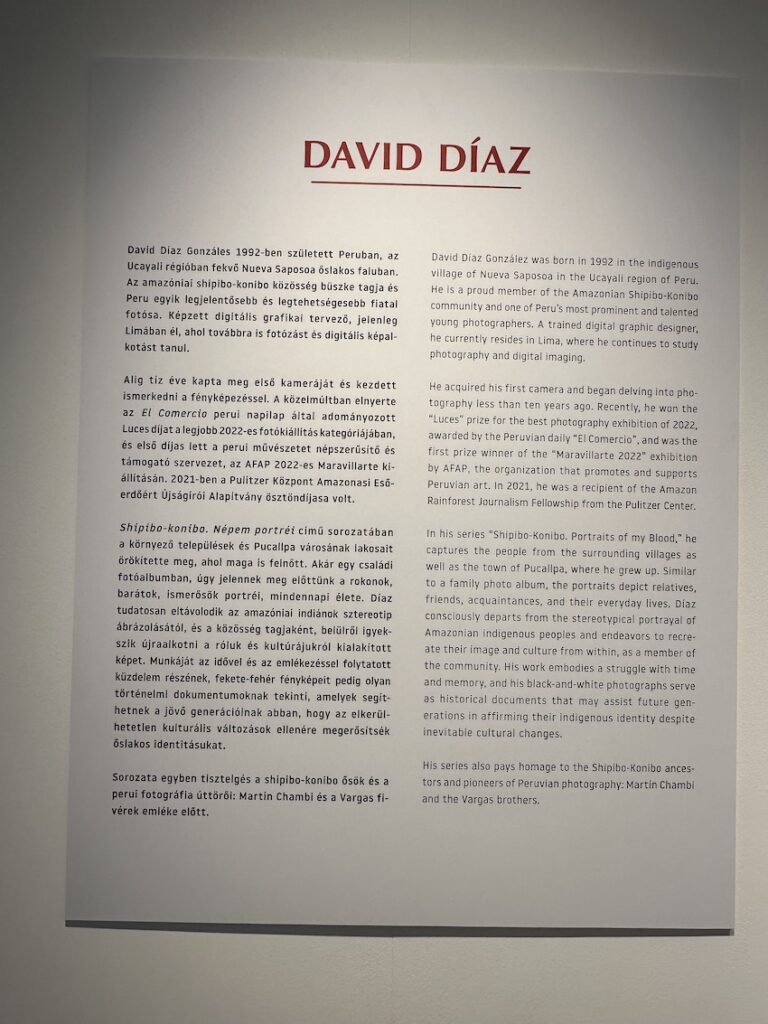
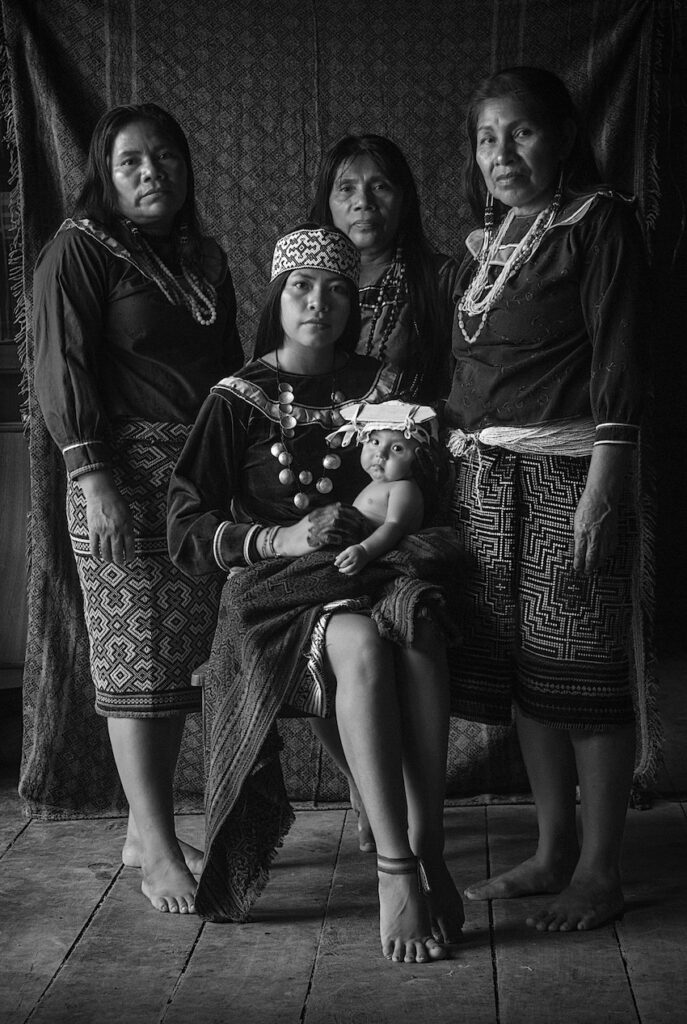
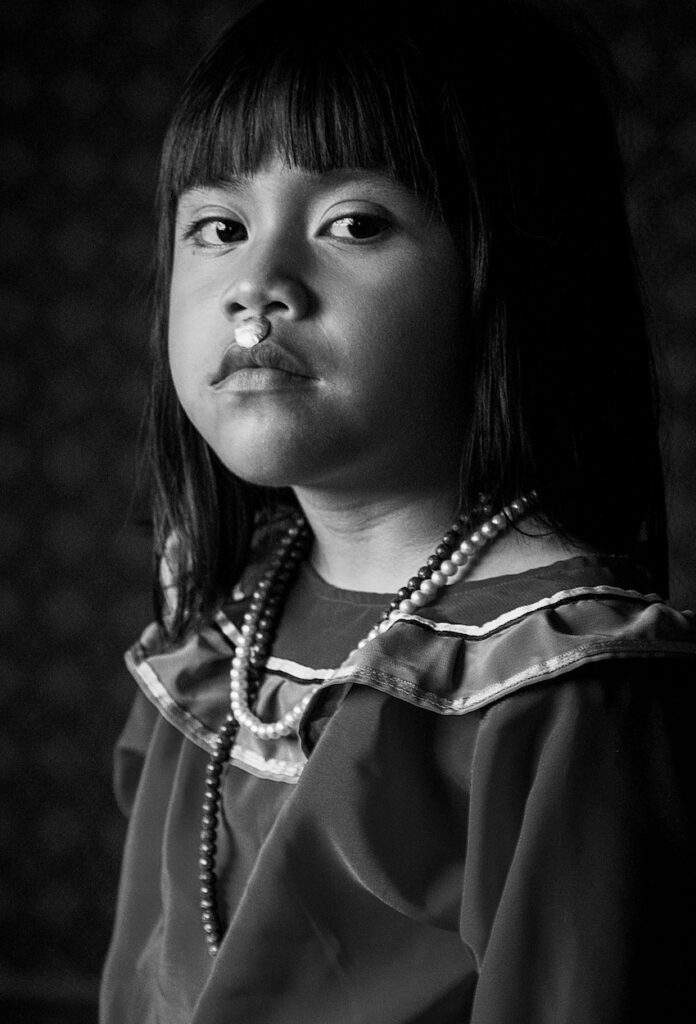
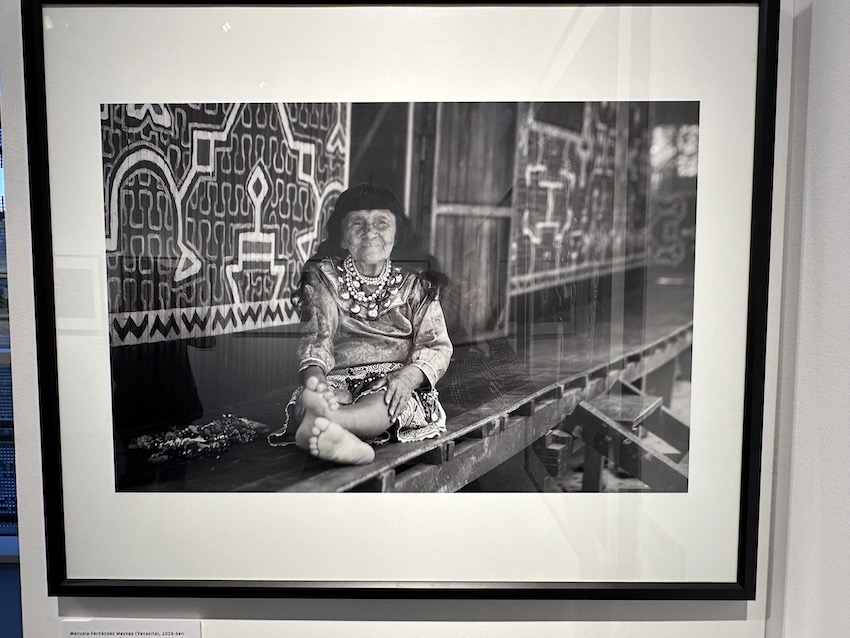
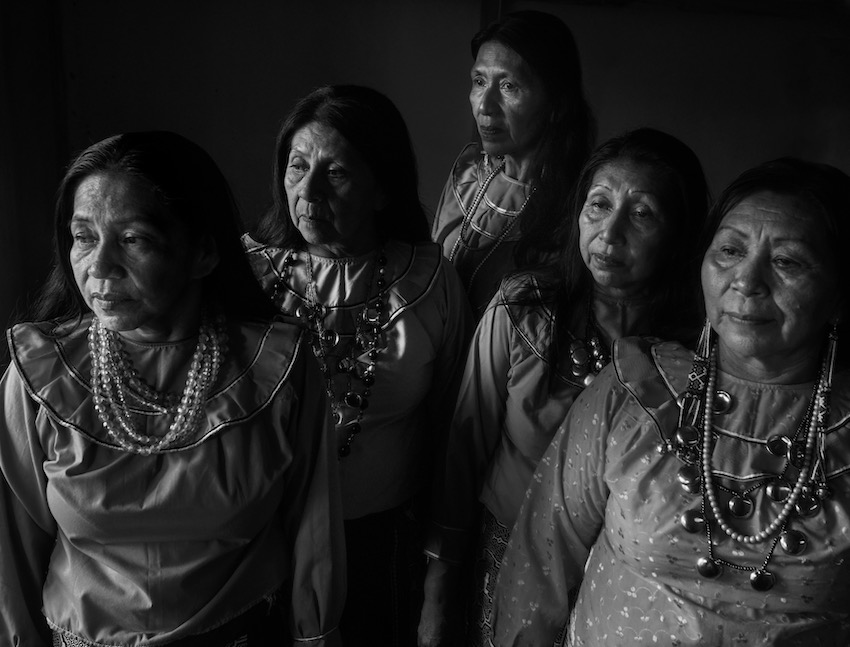
With a warm welcome, Dr. Lajos Kemecsi, Director General of the Ethnographic Museum proceeded to address the audience:
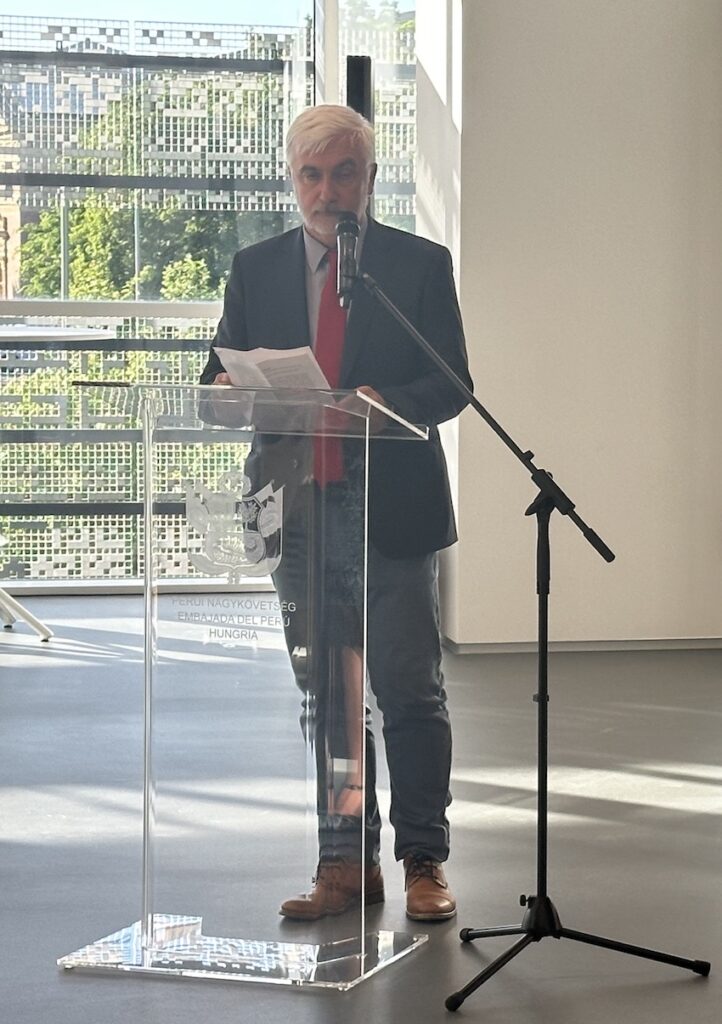
“Dear Guests, welcome to the Shipibo-Konibo. Portraits of my Blood by David Díaz temporary exhibition. With great respect I greet the Ambassador of the Republic of Peru to Hungary.
Just like 152 years ago, when the Museum of Ethnography was created, visitors today still identify a museum primarily with its exhibitions. In the case of the Ethnographic Museum there is a special expectation experienced in this field.
After our successful move here, the exhibitions opened in the main building gradually reveal the directions of research taking place in the museum, as well as the values and characteristics of the collections. There is special anticipation ahead of the huge permanent exhibition – currently under construction – scheduled to open in September 2024, which will offer a more complete picture than ever before about the museum collection. Curiosity and anticipation apply to the upcoming temporary exhibitions, as well. Through these, together with our international partners, we try to implement new topics that belong to our museum mission.
This is how the exhibition, opening today, was completed together with the Embassy of Peru in Hungary. Once again, I thank the Ambassador and his colleagues for their initiative and friendly cooperation.

One of the key concepts of this exhibition, alongside identity and memory, is cooperation. David Díaz’s photographs convey the transformative lifestyle of the Shipibo-Konibo people in the Amazon through the eyes of an artist researching and documenting his own culture. His commitment and the mission of the Museum of Ethnography are basically the same in terms of strengthening memory and breaking down stereotypes.
In addition to the fact that our institution’s collections include a rich and valuable South American Indian collection and regardless of the fact that we also have the largest ethnographic photo archive in Central Europe, this exhibition is mostly about personal stories, dialogue and the values of cultural encounters. And curiosity, knowledge and understanding are the cornerstones of a modern museum’s mission.
Stories unfold through photos, and for a person living in the third decade of the 21st century, nothing is more important than learning about the world, its past and present, and thinking about its future through authentic stories. This is what the Museum of Ethnography and the exhibition opening today is all about!”
The photographer:
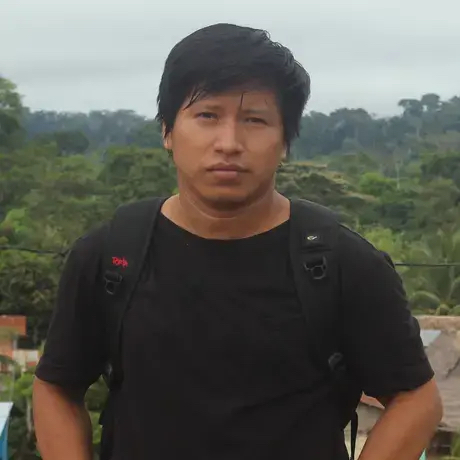
Born in 1992 in the native community of Nueva Saposoa, Ucayali, David Díaz Gonzáles is a proud member of the Shipibo-Konibo indigenous community. He is one of Peru’s most prominent and talented young photographers. He has won the “Luces” prize in Visual Arts for “Best Photography Exhibition 2022” granted by the Peruvian newspaper “El Comercio”. Additionally, he won the First Prize “Maravillarte 2022” in photography category, organised by the Association for the Promotion and Support of Peruvian Art.
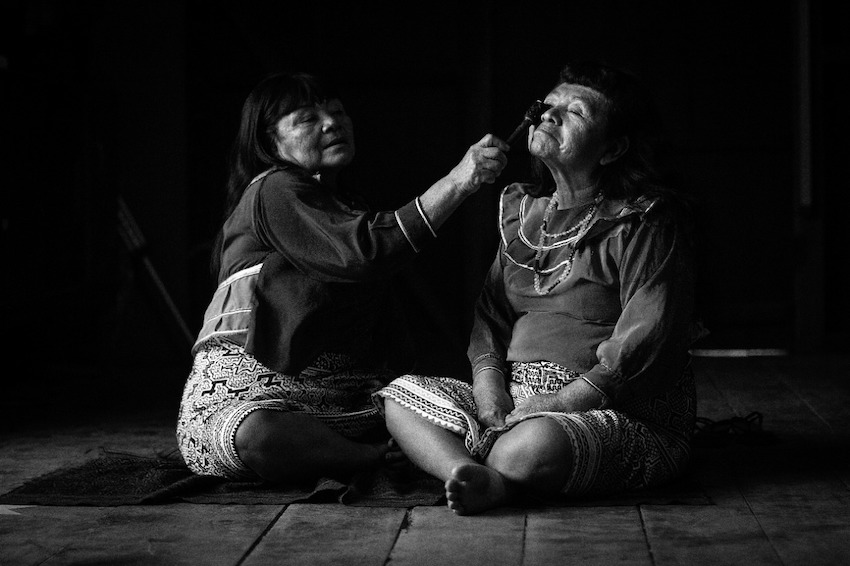
He is a trained digital graphic designer and currently lives in Lima, where he continues to study photography and digital imaging. His photographic research on deforestation caused by the Mennonite colony in the Masisea communities of Ucayali earned him a scholarship from the Amazon Rainforest Journalism Foundation of the Pulitzer Centre in 2021. The indigenous organisation Alianza Arkana published his photographs in the book “Kené Coloring Book” (in digital version) with the support of the Amazon Watch non-profit organisation in 2020.
In his series Shipibo-Konibo. Portraits of my Blood, both outdoors and in studio, he captures the people from the surrounding villages as well as the town of Pucallpa, where he grew up. Díaz consciously departs from the stereotypical portrayal of Amazonian indigenous peoples and endeavours to recreate their image and culture from within, as a member of the community. His work also pays homage to the Shipibo-Konibo ancestors and pioneers of Peruvian photography: Martín Chambi and the Vargas brothers.
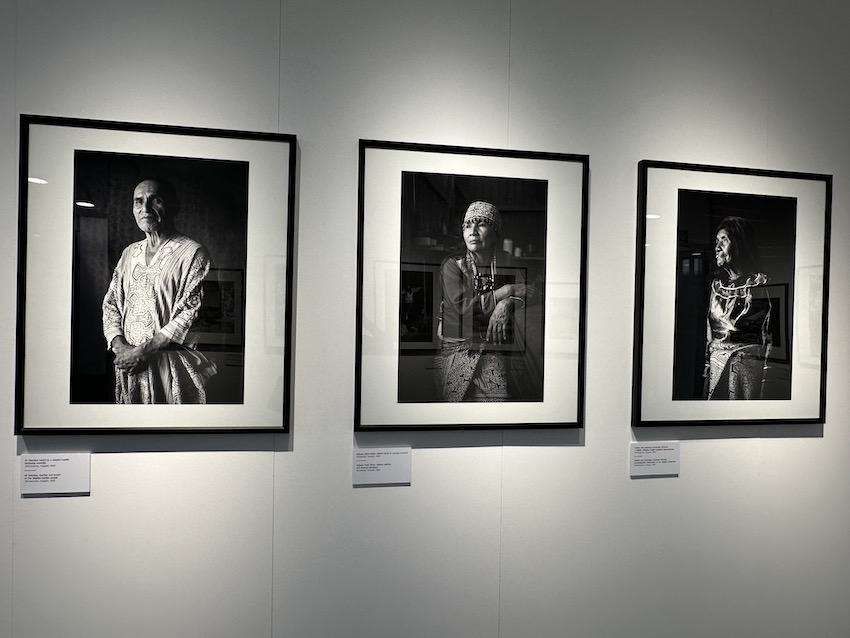
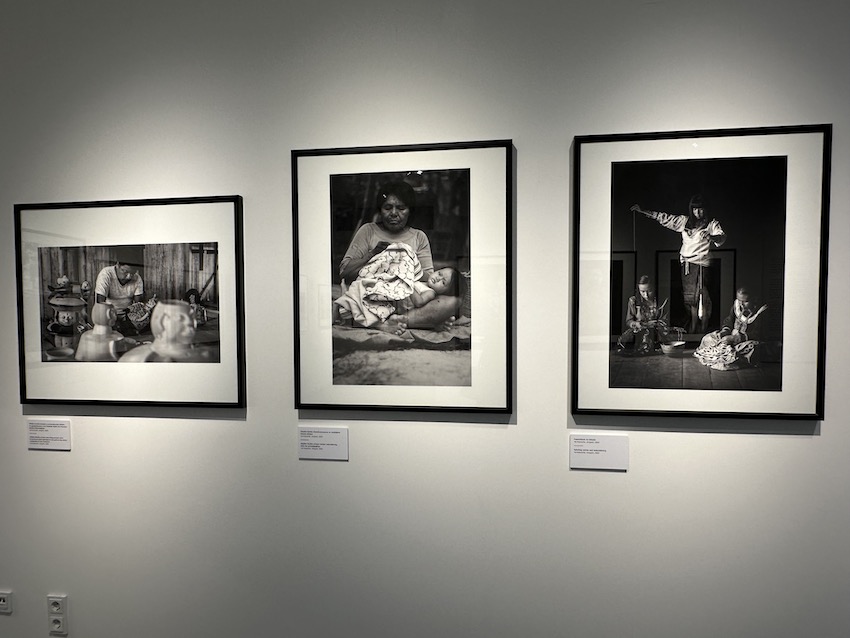
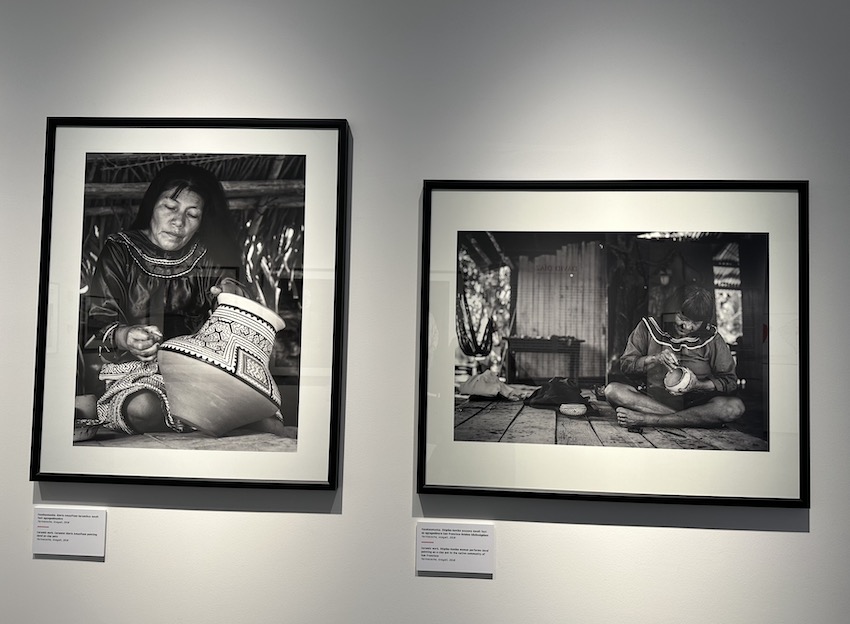
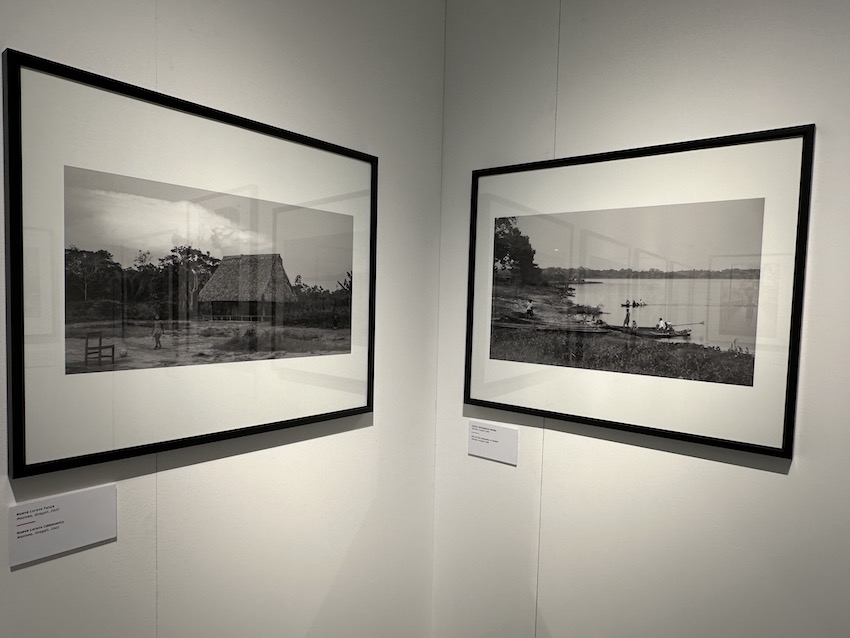
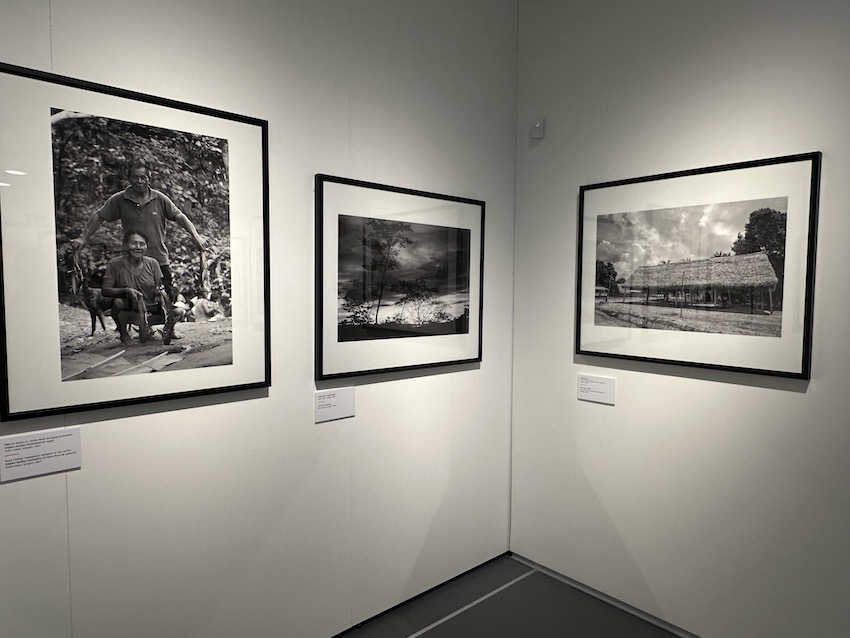
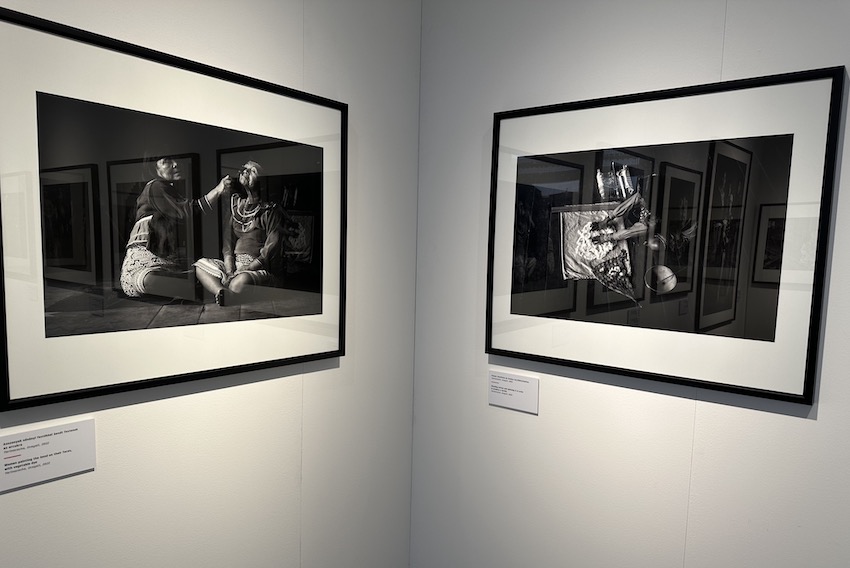
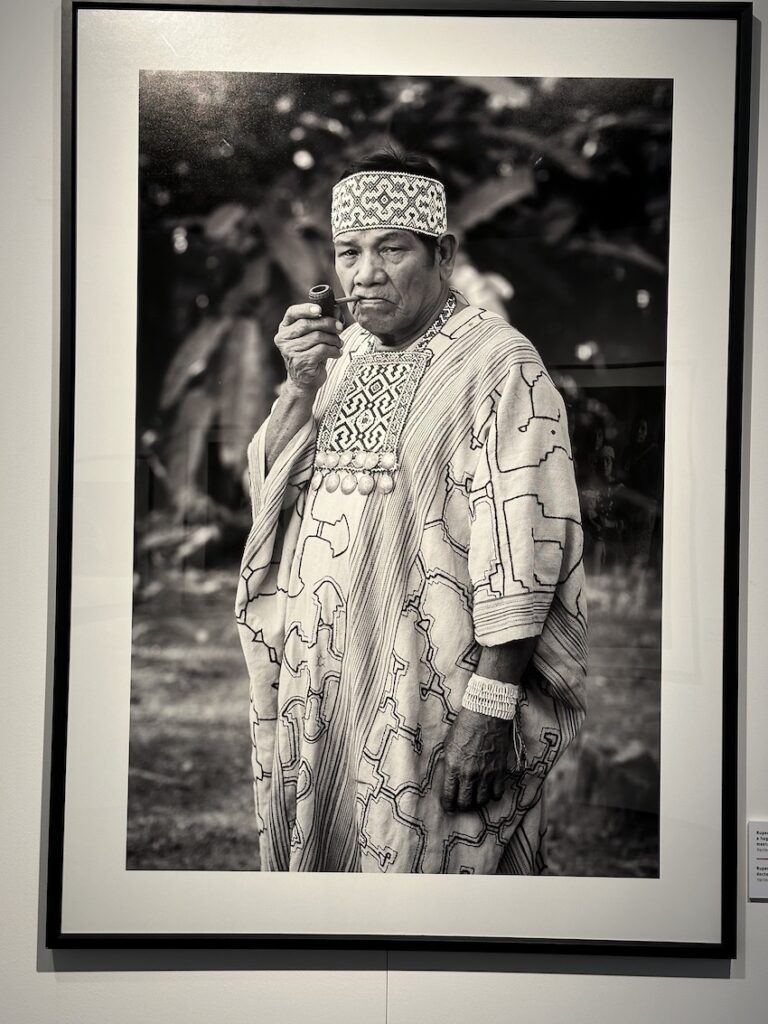
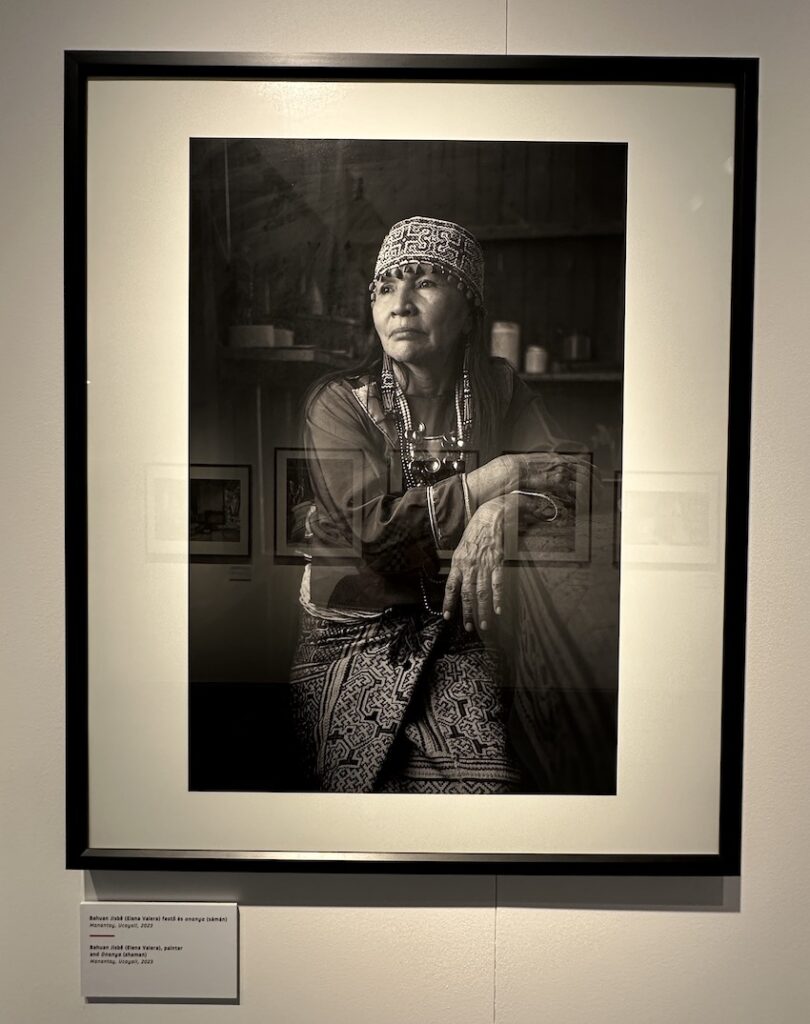
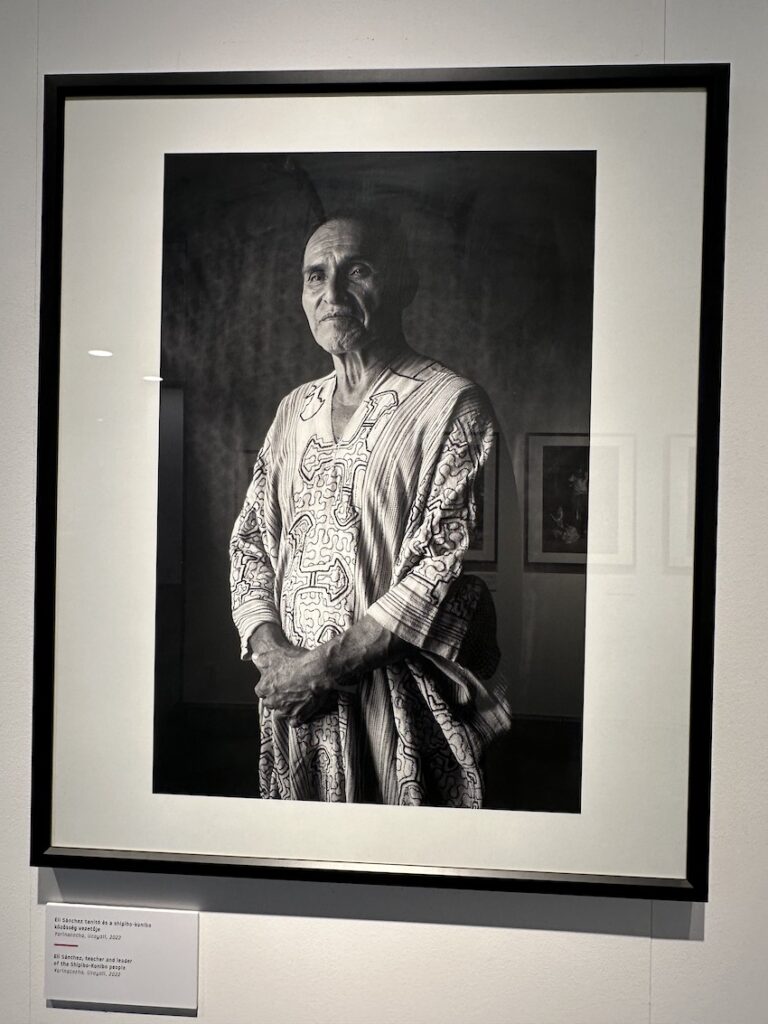
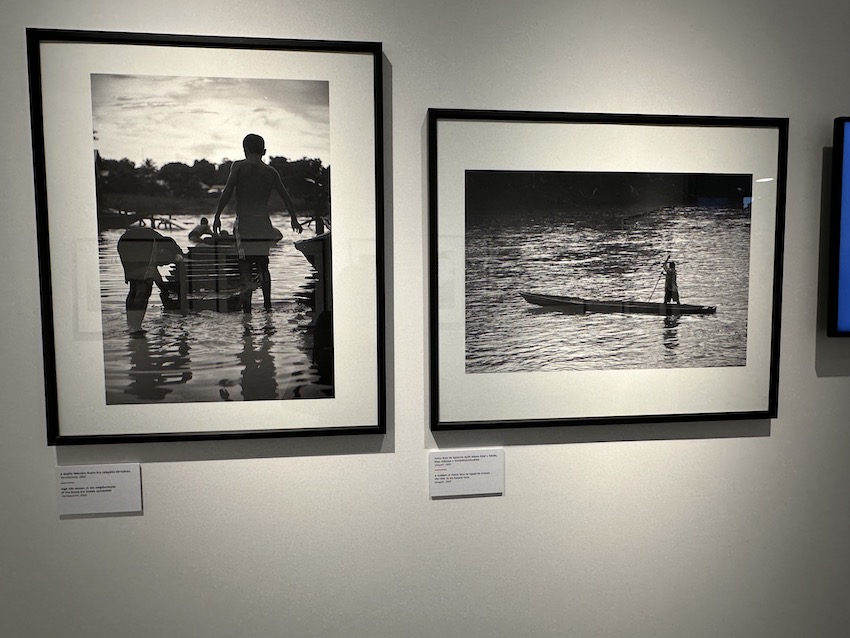
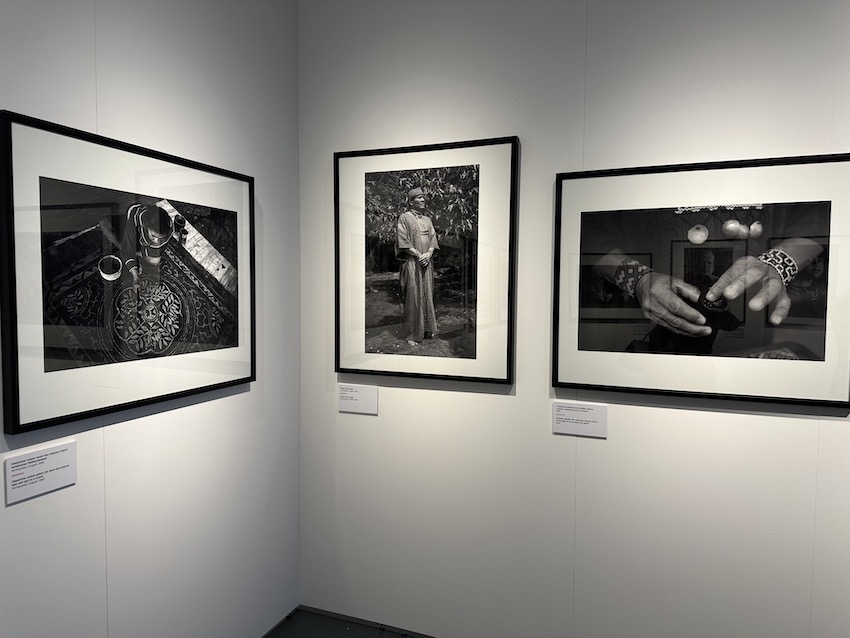
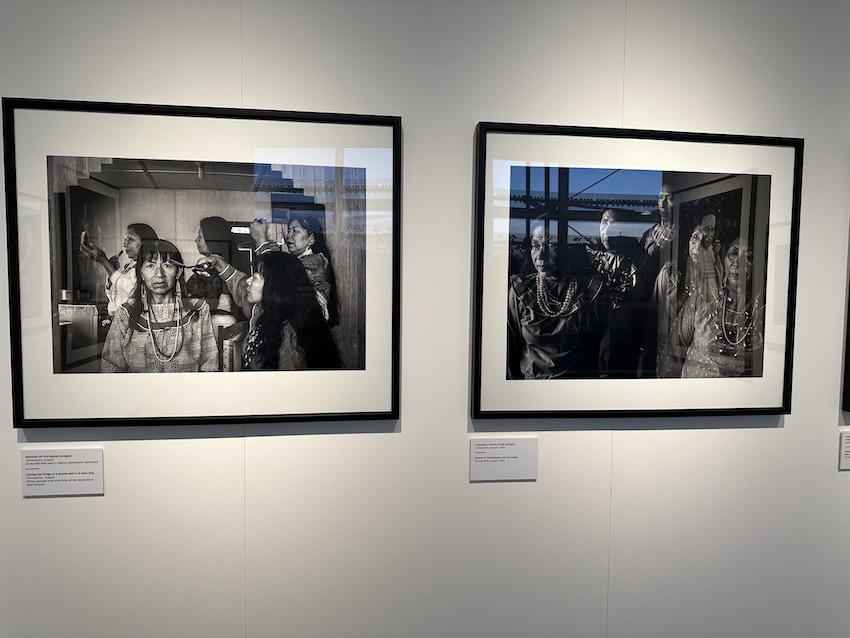
The temporary exhibition “Shipibo-Konibo. Portraits of my Blood” is open from 10 May 2024.
Sources: Embassy of Peru in Budapest, Museum of Ethnography
Photos by the Embassy of Peru, DPA


